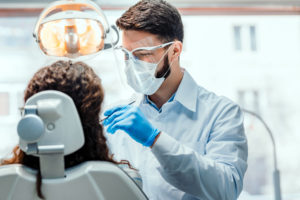
But the virus has not gone anywhere. Some regions planning to reopen have seen little downward movement in COVID-19 cases, which begs the obvious question: how safe are you?
The first thing to think about is how coronavirus has affected your community. Were there a lot of cases? Do cases remain high? If so, it’s likely unsafe for you to go running outside when things reopen.
Aside from the rates in your community, a personal risk assessment is required. Do you have any existing health conditions that put you at increased risk? An immune system weakened by high blood pressure, diabetes, or age can all boost risk.
If you do go out, it’s important to continue to observe proven risk-reducing measures like social distancing, regular hand washing, limited face touching, and wearing a mask to cover your nose and mouth.
Some of the places you may be wondering about include doctor’s and dentist’s appointments. Before going for a checkup, consult your doctor via phone or video to see if a physical visit is required. A decision will likely be made based on your risk.
For any non-emergencies, it’s likely your doctor will provide their services remotely. Dentists may recommend delaying any non-pertinent work, as well.
Many experts suggest that the conditions at health care facilities, like family doctors and dentists, should be safe. They are likely to have precautionary measures in place to limit patient’s risk of contracting the virus, but be sure to ask before you go.
Now, what about all the other things you’ve been missing? Experts recently spoke to reporters from the Oregonian and ranked risk level of certain activities on a scale of 1 to 10. These rankings are also assuming you’re wearing a mask and practicing other preventative measures.
A few important factors include whether the activity is conducted indoors or outdoors (there is less risk being outside), potential exposure time to the virus, proximity to others, the likelihood of risk-reduction compliance by others, and personal risk.
Some rankings include:
- Gyms – 8
- Churches/religious gatherings – 8
- Buffet restaurants – 8
- Close contact sports (like basketball) – 7
- Low contact sports like tennis, gold – 1
- Dining indoors at a restaurant – 6
- Salon/barbershop – 6
- Dinner party at a friend’s house – 5
- Shopping mall – 5
- Dentist – 4
- Groceries – 3
- Outdoor walk with friends – 2